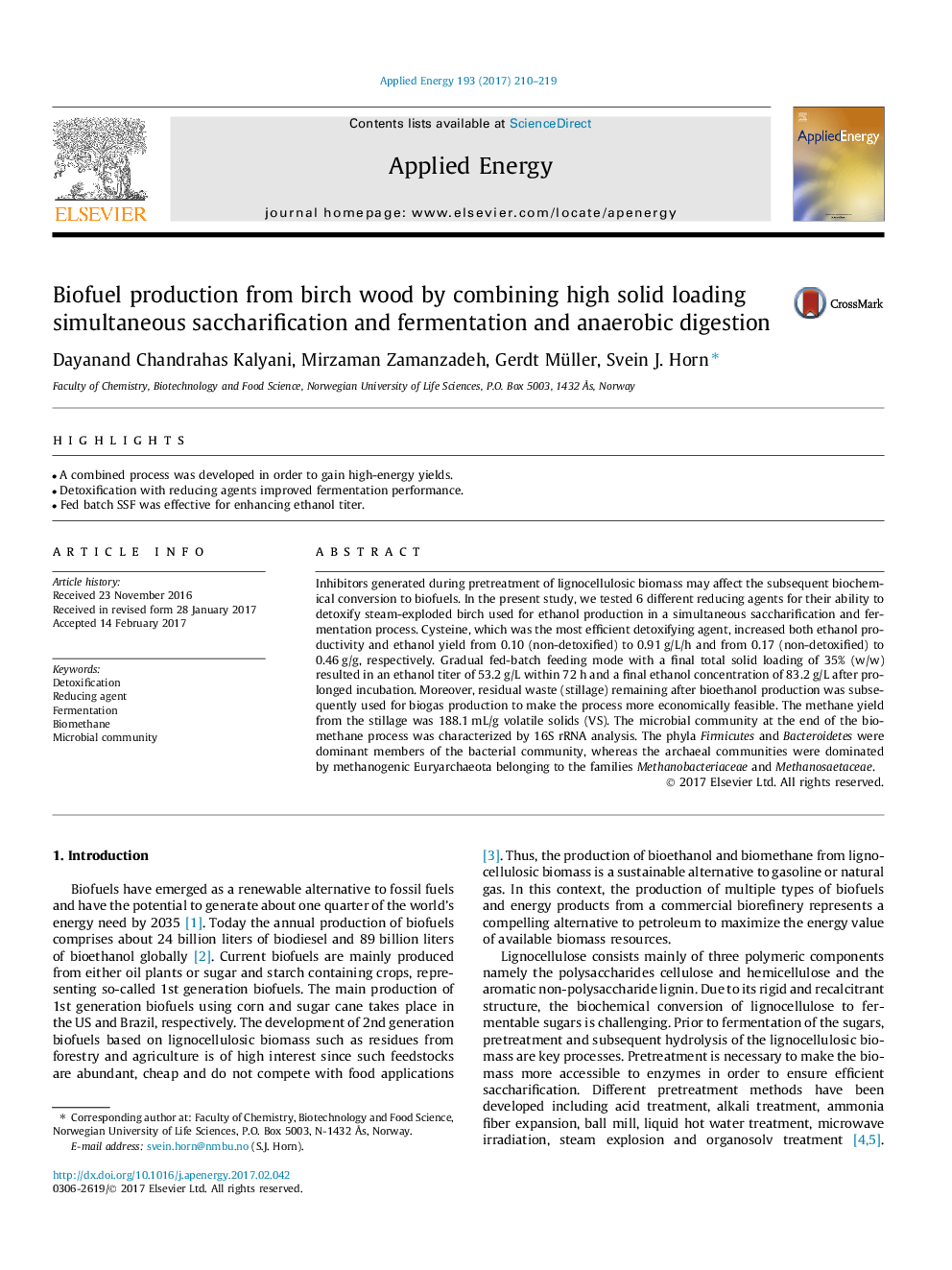| Article ID | Journal | Published Year | Pages | File Type |
|---|---|---|---|---|
| 4916296 | Applied Energy | 2017 | 10 Pages |
Abstract
Inhibitors generated during pretreatment of lignocellulosic biomass may affect the subsequent biochemical conversion to biofuels. In the present study, we tested 6 different reducing agents for their ability to detoxify steam-exploded birch used for ethanol production in a simultaneous saccharification and fermentation process. Cysteine, which was the most efficient detoxifying agent, increased both ethanol productivity and ethanol yield from 0.10 (non-detoxified) to 0.91Â g/L/h and from 0.17 (non-detoxified) to 0.46Â g/g, respectively. Gradual fed-batch feeding mode with a final total solid loading of 35% (w/w) resulted in an ethanol titer of 53.2Â g/L within 72Â h and a final ethanol concentration of 83.2Â g/L after prolonged incubation. Moreover, residual waste (stillage) remaining after bioethanol production was subsequently used for biogas production to make the process more economically feasible. The methane yield from the stillage was 188.1Â mL/g volatile solids (VS). The microbial community at the end of the bio-methane process was characterized by 16S rRNA analysis. The phyla Firmicutes and Bacteroidetes were dominant members of the bacterial community, whereas the archaeal communities were dominated by methanogenic Euryarchaeota belonging to the families Methanobacteriaceae and Methanosaetaceae.
Related Topics
Physical Sciences and Engineering
Energy
Energy Engineering and Power Technology
Authors
Dayanand Chandrahas Kalyani, Mirzaman Zamanzadeh, Gerdt Müller, Svein J. Horn,
